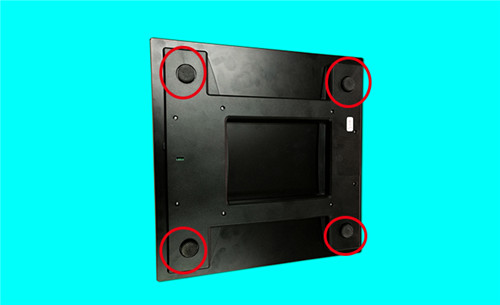Weighing principle of intelligent scale
The fast and accurate working method of intelligent weighing sensor is based on electromagnetic force recovery principle (EMFR). The basic principle of intelligent weighing sensor can be calibrated with simple beam balance. The heavy load is placed on the side of the beam (coil arm). The result is that the coil connected to the other side of the beam tries to move the magnetic field of the magnet.
Any minimum deviation can be identified, and so much current is immediately sent through the coil through an electrical regulator circuit that the balancing beam hardly moves and remains in a neutral position. The deviation is only a few nanometer problems, contrary to the measurement process depending on motion. The force exerted by the weight on the system is compensated by the current through the coil, and most people can interchangeably use smart scales and electronic scales to weigh objects, ingredients, animals and humans; however, these intelligent scales operate in a variety of ways.
Weighing sensor and principle smart scale
Electronic scales have many types of weighing sensors, but we will focus on strain-type intelligent weighing sensors, because it is usually used for weighing purposes. Intelligent weighing sensor is essentially a sensor. It is a solid metal element, but it has enough elasticity to deform the load and strain gauge. Some weighing instruments use a single weighing sensor, while others use multiple objects to load an electronic scale. The strain gauge converts the force applied to the load cell to electronic signals. Once the load is removed from the smart scale, the weighing sensor will be restored to its original state. Weighing sensors determine the capacity of the instrument; basically, the maximum mass that can be measured before the deformation becomes permanent damages the electronic scale.

Smart scales are basically electrical conductors attached to thin films (thin conductive coatings). When the film is subject to change, the electric conductor will also change. When the load is placed on the weighing sensor, the weighing sensor bends (or therefore deforms, hence the name), which changes the resistance. The resistance is recorded through the strain gauge of the intelligent scale. When the load is removed, the weighing sensor returns to normal shape and the strain gauge is also the same. The change in resistance is converted to a digital signal and then processed to appear readable on the monitor.
Load weighing principle of intelligent scale
Intelligent weighing information is sensitive to unexpected deformation, such as impact or temperature changes, because weighing sensors measure mass mainly by converting load-induced deformation into electronic signals. This is why we must handle the weighing instruments carefully and calibrate them regularly. The digital principle of smart scales is the use of strain gauge weighing sensors. Intelligent scales use springs to indicate the weight of objects, and the principle of smart scales is to convert the weight of the force into electrical signals. Its key components include strain gauges. Device for measuring the strain of an object on an intelligent scale, and a weighing sensor for converting force into electronic information of an electrical signal. The weighing sensor is also called gravity sensor.
When the object is placed on the smart scale, the weight is distributed evenly first. Under the glass flat tray of the digital scale, you may find, for example, four slightly raised nails in the corner for evenly distributing the weight of the force. Then, the design of thesmart scale applies the force of weight to one end of the weighing sensor. When the weight is applied, the end of the weighing sensor of the electronic scale is bent downward.

Then, the force of the heavy material deforms the strain gauge of the smart scale. The strain gauge can be made up of metal orbits or chaff and combined into printed circuit boards or other backing. When the foil is deformed, the backing is bent or stretched.
Then the principle of intelligent scale is to transform the deformation into electrical signals. Because the weighing sensor has charge, when it moves down, the resistance will change. The resulting tiny changes in resistance become electrical signals. The electrical signal of thesmart scale runs through an analog-to-digital converter, and then is analyzed through data compiled microchips. As a result of this final calculation, the number indicating the weight of the object appears on the LCD display of the intelligent scale.

Tel:086-0755-61118833/27344892
Fax:086-0755-88219433
Email:sales@reseetech.com
URL:www.nylonsexmovies.net、www.reseetech.com
Address:North District,the NO.3 Building, Dapu South Road, Haoer Gangtou Industy Zone, Shajing, Baoan District, Shenzhen
